Found a total of 10000 related content

css animation examples
Article Introduction:Hover button zooms in to achieve interactive effects through transform:scale() and transition; 2. Fade in animation using @keyframesfadeIn with animation:forwards to maintain the final state; 3. Infinite rotation icon uses transform:rotate() and border differences to create loading effects; 4. Left and left jitter prompts to move between 25% and 75% keyframes through translateX to generate warning feedback; 5. Slide up and down banners from negative values to 0 to slide into vision; 6. Text typewriter effect simulates verbatim input through width gradient with steps() and adds cursor flash
2025-07-28
comment 0
306

How to create a CSS-only tooltip?
Article Introduction:To create a pure CSS prompt box, you must first set up an HTML structure and use a container containing trigger elements and prompt text; 2. Hidden the prompt text by default through CSS, and use the :hover pseudo-class to achieve hover display; 3. Add position, visibility, opacity and transition attributes to achieve smooth display effect; 4. Optionally add pseudo-elements::after to create a pointing arrow and adjust the position to achieve different directions of up, down, left and right; 5. Key points include using visibility instead of display to support transition animation, ensuring that the parent container is positioned as a relative child element and absolute, and using z-index to ensure complete hierarchical display.
2025-07-28
comment 0
616

Ring Animation Reel
Article Introduction:? "Mesmerizing 3D ring animation – simple code, stunning effect! Watch it flow up and down in style. ??"
Animation #3DAnimation #WebDesign #CSSArt #JavaScriptAnimation #CreativeCoding #FrontendDeveloper #TechReels #CodeArt #Illusi
2025-01-07
comment 0
912
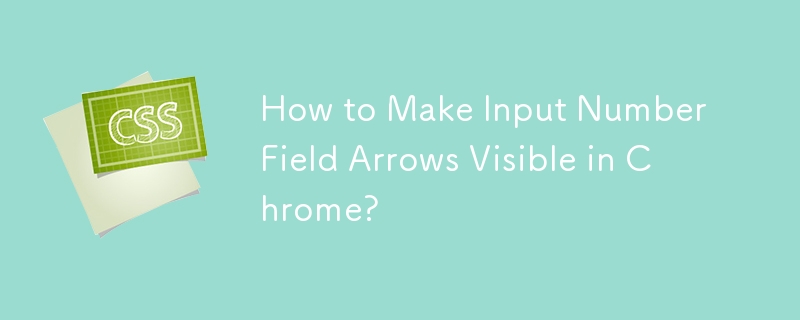

Vanilla Javascript: Creating Animated Sticky Navigation Menu
Article Introduction:Core points
Create an animated sticky navigation menus without the need for a jQuery plugin using pure JavaScript, CSS, and HTML. The menu is designed to slide out of view when scrolling down and slide back into view with a translucent effect when scrolling up.
This process involves setting up the basic HTML structure, applying styles to main elements, and then animateing the menu. The animation is triggered by attaching the event handler to the scroll event and using CSS transformation to adjust the position and appearance of the menu according to the scrolling direction.
This custom solution provides more design flexibility and allows easy customization to be done according to specific needs. The end result is a dynamic interactive navigation menu that enhances the user experience.
Web navigation menu design needs to consider many factors, such as dishes
2025-02-16
comment 0
1165
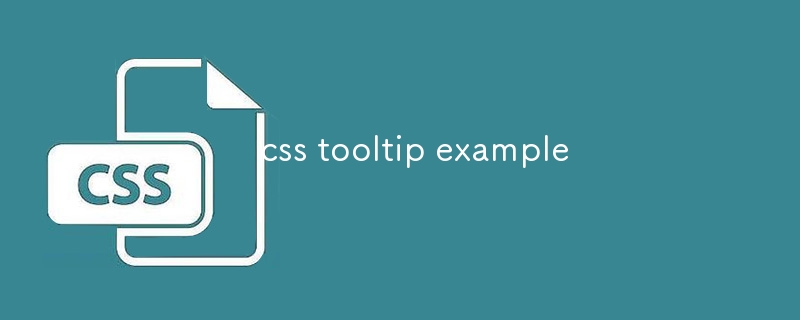
css tooltip example
Article Introduction:The CSSTooltip effect is implemented through pure CSS without JavaScript; 2. Use :hover to trigger visibility and opacity changes to achieve display and fade in animation; 3. The prompt box is positioned by position:absolute, and left:50% plus transform:translateX (-50%) to achieve horizontal centering; 4. Use ::after pseudo-element to create a small arrow pointing down; 5.z-index:1 to ensure that the prompt box is at the top level; 6. You can adjust the attributes such as top, bottom and border-color to achieve prompt boxes in different directions up, down, left and right directions; 7. It is recommended to use vi
2025-07-28
comment 0
734
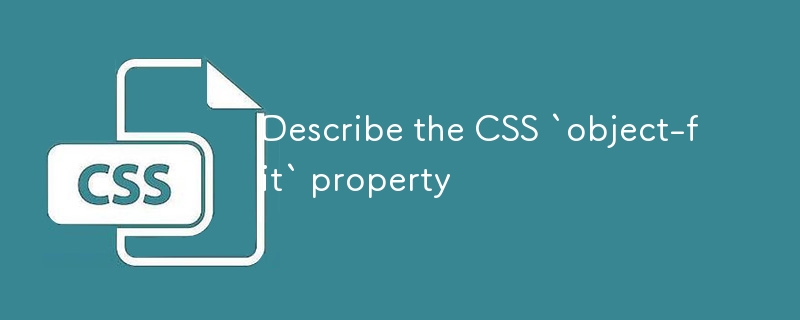
Describe the CSS `object-fit` property
Article Introduction:The object-fit attribute is used to control the alignment and scaling of pictures or videos in the container. Common values include: 1.fill (stretching fill), 2.contain (holding scale to display the full picture), 3.cover (keep scale to fill the container, possibly cropping), 4.none (showing the original size), 5.scale-down (take the smaller effect between none and contain); is often used to unify the image display effect, such as the avatar component is clipped circularly, the product picture is kept neatly with cover, and the album is used to display complete photos; when using it, you should pay attention to only taking effect for replaceable elements, the container must have clear size, compatibility issues, and cooperation with object-po
2025-07-17
comment 0
452

How do I use Sublime Text's column selection mode?
Article Introduction:SublimeText's column selection mode quickly selects rectangular areas through keyboard and mouse combinations to achieve simultaneous editing of multiple rows. Specific methods include: 1. Drag the Alt mouse on Windows/Linux, and drag the Option mouse on macOS; 2. Select the exact box to use Shift Alt (Windows/Linux) or Shift Option (macOS) to add mouse clicks; 3. Keyboard shortcut Ctrl Alt up/down arrow (Windows/Linux) or Cmd Option up/down arrow (macOS) to add vertical cursor to simulate column selection effect. After entering this mode, the input, deletion, copy and paste operations are all used for all selections.
2025-07-19
comment 0
551

What are the different input types available in HTML5?
Article Introduction:The new input types added to HTML5 include email, number, date, etc., which improve form interactivity and user experience, and have built-in verification functions. For example, type="email" automatically verifies the mailbox format and triggers the mobile email keyboard; type="number" limits digital input and supports up and down adjustment; type="date" provides calendar selection date; type="range" is used to slide to select numerical ranges; other such as url, tel, color, etc. also have specific uses, reducing the JavaScript verification needs.
2025-07-05
comment 0
579
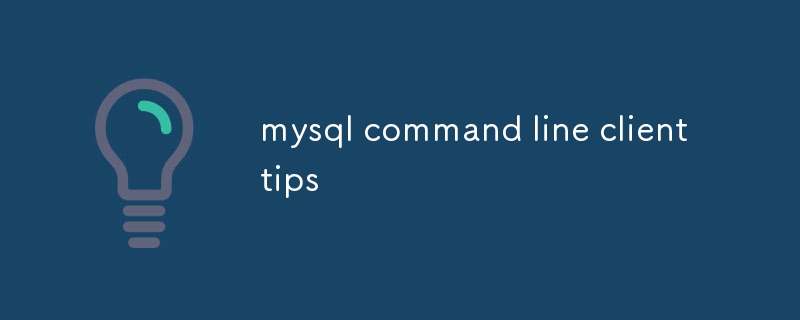
mysql command line client tips
Article Introduction:Mastering common techniques of MySQL command line can improve operation efficiency; configuring default login information can quickly enter the database interface; using up and down keys or systemhistory to view historical commands, the Tab key will automatically complete the table name field; using \G vertically display results and pagermore pagination display; using shortcut commands such as \s to view connection status, \c cancel statement, \g execution statement, and \h to obtain help documents.
2025-07-14
comment 0
179

How to create a dropdown menu with CSS?
Article Introduction:The key to creating a drop-down menu is the use of HTML structure and CSS. First, build a structure with an unordered list, the main menu item is the top level, and the submenu is nested inside it, for example, using nested ones. Secondly, control the hiding and display of the submenu through CSS, set .submenu{display:none;position:absolute;}, and display it when hovering: .dropdown:hover.submenu{display:block;}. Finally, you can add style details such as background color, hover effect, border shadow, etc. to improve the beauty and user experience.
2025-07-18
comment 0
668
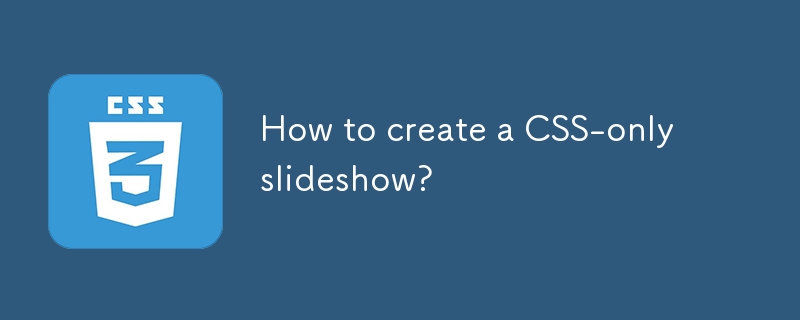
How to create a CSS-only slideshow?
Article Introduction:Use hidden radio input and:checked pseudo-class to control slide switching; 2. Related input with slideshow and navigation points through ~ brother selector; 3. Use opacity and transition to achieve fading effect; 4. The navigation label is bound to the input through the for attribute and styled into indicator points; 5. The optional automatic playback requires complex CSS animation but poor maintenance, and it is recommended to rely on user interaction. This method does not require JavaScript, leverages CSS selectors and form states to achieve lightweight and accessible slideshow functionality, suitable for simple image display scenarios.
2025-08-03
comment 0
523

How to create a simple popup or modal with HTML, CSS, and JS?
Article Introduction:To achieve a basic pop-up effect, you need to follow the following steps: 1. Structure: Use HTML to create trigger buttons, mask layer and pop-up content area; 2. Style: Set default hidden, centered layout, mask background and close button styles through CSS; 3. Interaction: Use JavaScript to bind click events to control pop-up display and hide, and can expand the ESC key closing function; 4. Optimization: Add CSS animation to improve user experience. The entire process does not require a third-party library, which is suitable for quickly realizing basic pop-up functions.
2025-07-12
comment 0
383
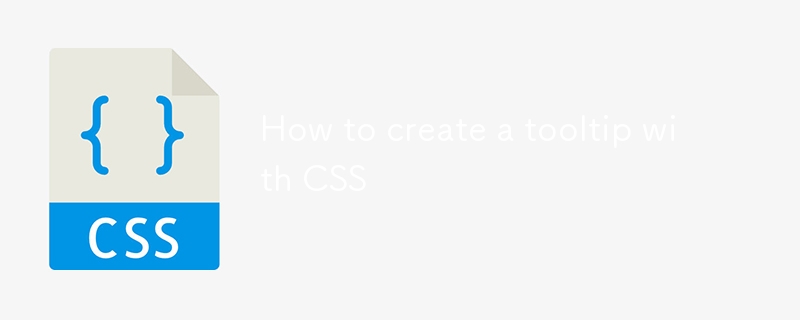
How to create a tooltip with CSS
Article Introduction:The key to using CSS to create a tooltip is to match structure and style. The common method is to combine HTML and CSS implementation. 1. Basic structure: The tooltip is triggered through elements with class names, and the .tooltip and .tooltiptext cooperate, the prompt content is hidden by default and displayed when the mouse is hovered. 2. Prompt position control: Adjust the position attribute to display up, down, left and right directions, and use the ::after pseudo-element to add triangle arrows to enhance the visual effect. 3. More tips include setting delays, handling mobile compatibility issues, keeping content concise and unifying color font styles. If you need complex interactions, you can use JavaScript libraries such as Tooltip.
2025-07-27
comment 0
939
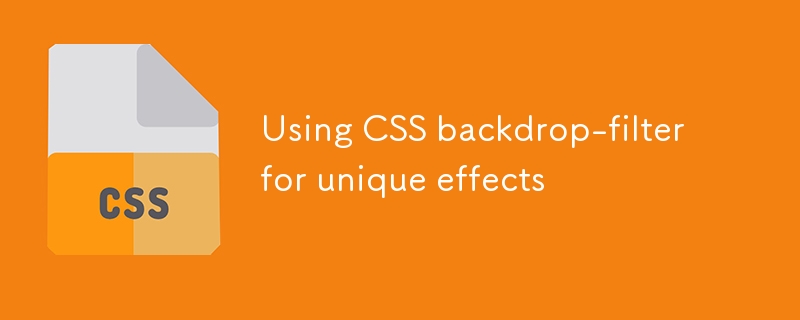
Using CSS backdrop-filter for unique effects
Article Introduction:Backdrop-filter can enhance the hierarchy of web pages through blur and other effects, and is suitable for pop-up windows, cards and other components. 1. Use blur to achieve the effect of frosted glass, such as .modal{backdrop-filter:blur(10px); background-color:rgba(255,255,255,0.6);}, and it is recommended to add the -webkit-prefix to improve compatibility; 2. Combining multiple filter functions such as brightness, contrast, etc. can create a richer visual style, but pay attention to the order affecting the effect; 3. Pay attention to the impact of performance consumption, browser compatibility and hierarchy structure on display effect, and adopt a downgrade solution to ensure the page
2025-07-12
comment 0
484
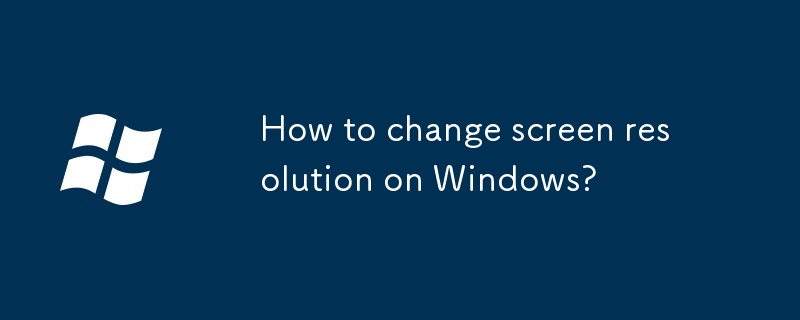
How to change screen resolution on Windows?
Article Introduction:There are three ways to adjust the Windows screen resolution 1. Right-click the desktop and select "Display Settings" and select the appropriate value in the "Display Resolution" drop-down menu and save it; 2. Find "Adjust Screen Resolution" through the small icon mode of the control panel to set it; 3. If you encounter problems, you can wait for the system to automatically restore, restart the Explorer or enter safe mode to adjust, and ensure that the graphics card driver is the latest version. Each method can achieve resolution adjustment, but it needs to be reasonably selected according to the monitor support range to ensure the display effect.
2025-07-23
comment 0
152
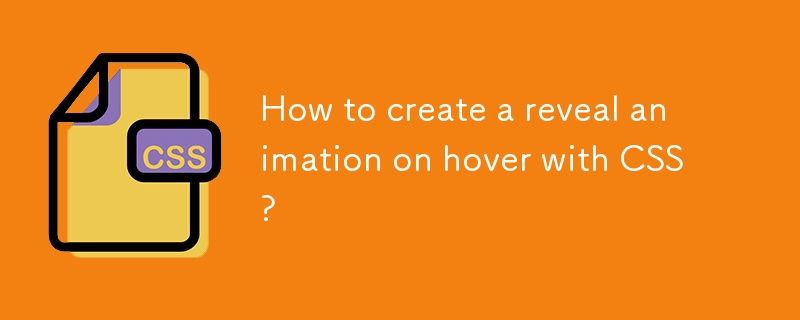
How to create a reveal animation on hover with CSS?
Article Introduction:Create a hover display animation. You must first set up the HTML structure, including the container, image and content to be displayed; 2. The container uses relative positioning and set overflow:hidden to hide overflow content; 3. The content to be displayed uses absolute positioning, and its initial state is placed at the bottom invisible through transform:translateY (100%); 4. Use the :hover pseudo-class to trigger transform:translateY (0) to achieve upward display; 5. Optionally add the fade effect of opacity:0 to opacity:1, or combine sliding and fade to enhance visual performance; finally achieve smooth hover display without JavaScript
2025-08-06
comment 0
357

how to use the track matte key in Premiere Pro
Article Introduction:Use TrackMatteKey in PremierePro to control the display range of another layer through the brightness or transparency of one layer. 1. Commonly used in scenes such as text masking, graphic outline display, and video embedding medium shape; 2. Setting steps include: putting the content video on the upper layer, putting the mask layer down layer, applying TrackMatteKey and setting Matte to the lower layer; 3. Supporting two modes: LumaMatte (based on brightness) and AlphaMatte (based on transparency), and you can check the Reverse inverting mask effect. Master the layer order, Matte type selection and Reverse status to achieve diverse creative effects.
2025-07-25
comment 0
1006

How to show hidden files and folders in Windows?
Article Introduction:To display hidden files and folders, you can achieve it in the following three ways: 1. Click the "View" tab in File Explorer and check "Hidden Projects" to temporarily display hidden content; 2. Set the global display of hidden files through folder options, and the path is "View" → "Options" → "View" tab to select "Show hidden files, folders and drives" in the tab; 3. Advanced users can modify the Hidden item value to 1 through the registry to take effect permanently, and the registry must be backed up before operation. The above method is suitable for different usage scenarios and can be selected according to your needs.
2025-07-13
comment 0
599


















